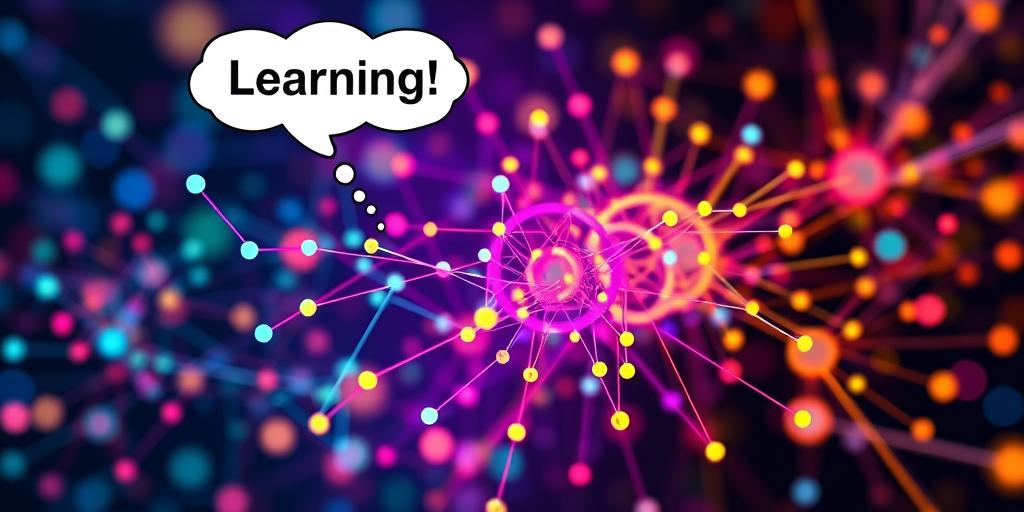Artificial intelligence (AI) is rapidly transforming our world, from how we interact with technology to the way we make decisions. At the heart of this revolution lies the concept of machine learning, where AI algorithms learn from data to perform specific tasks. But how do these algorithms actually learn?
Unveiling the Mystery Behind Machine Learning
Introduction: The Rise of AI and Machine Learning
AI, in essence, is the ability of machines to perform tasks that typically require human intelligence. Machine learning, a key subset of AI, empowers computers to learn from data without explicit programming. Imagine teaching a child to recognize a cat. You show them various pictures of cats, highlighting their features. Over time, the child learns to identify cats based on this training. Machine learning works similarly, but instead of children, it’s algorithms that are trained on vast amounts of data.
The Core of AI Learning: Algorithms and Data
What are AI Algorithms?
AI algorithms are sets of instructions that enable a computer to learn from data and make predictions or decisions. They act as the brain of a machine learning system, guiding it through the learning process. Think of them as the recipes used to create a delicious AI dish, where data is the key ingredient.
The Role of Data in AI Learning
Data is the fuel that powers AI algorithms. The quality and quantity of data directly impact the algorithm’s learning process. Just like a chef needs the right ingredients, an AI algorithm needs diverse and representative data to learn effectively. For example, if you want to train an algorithm to recognize different breeds of dogs, you’ll need a dataset containing images of various breeds.
Types of Machine Learning Algorithms
Supervised Learning
In supervised learning, algorithms are trained on labeled data, meaning each data point has a corresponding output or target value. For example, training an algorithm to predict house prices would involve providing data on house features (e.g., size, location) and their corresponding sale prices. The algorithm learns the relationship between these features and the target output, allowing it to make predictions on new, unseen data.
Unsupervised Learning
Unsupervised learning, in contrast, involves training algorithms on unlabeled data. The algorithm discovers patterns and relationships within the data without any predefined targets. A common example is clustering, where the algorithm groups similar data points together based on their characteristics. This is useful for tasks like customer segmentation or anomaly detection.
Reinforcement Learning
Reinforcement learning involves training algorithms by interacting with an environment. The algorithm learns through trial and error, receiving rewards for desired actions and penalties for undesired ones. Think of a robot learning to navigate a maze. It tries different paths, receiving rewards for reaching the goal and penalties for hitting obstacles. Through this feedback loop, the algorithm learns the most efficient route to the goal.
How AI Algorithms Learn: A Step-by-Step Guide
Training Phase: Feeding the Algorithm
The training phase is where the algorithm “learns” from the data. It’s like a student studying for an exam. The algorithm analyzes the data, identifying patterns and relationships. This process involves adjusting the algorithm’s internal parameters to minimize errors and improve its predictive capability.
Evaluation Phase: Testing the Algorithm’s Performance
Once trained, the algorithm’s performance is evaluated on a separate dataset called the test set. This is like a student taking a test after studying. The algorithm’s predictions on the test data are compared to the actual outputs, revealing its accuracy and ability to generalize to new data.
Optimization Phase: Fine-tuning for Accuracy
Based on the evaluation results, the algorithm is further optimized to enhance its performance. This could involve adjusting the training data, tweaking the algorithm’s parameters, or trying different learning techniques. It’s like a student reviewing their exam answers and identifying areas for improvement.
Examples of AI Algorithms in Action
Image Recognition
AI algorithms are widely used in image recognition, powering applications like facial recognition, object detection, and medical imaging analysis. These algorithms learn to identify patterns and features in images, enabling them to classify objects, detect anomalies, and even diagnose diseases.
Natural Language Processing
Natural language processing (NLP) algorithms deal with understanding and generating human language. These algorithms are behind chatbots, machine translation, and sentiment analysis tools. They learn the nuances of language, enabling them to interpret text, translate languages, and analyze emotions expressed in text.
Predictive Analytics
Predictive analytics utilizes AI algorithms to forecast future events based on historical data. These algorithms are used in areas like financial modeling, marketing campaigns, and fraud detection. They learn from past trends and patterns to predict future outcomes, helping businesses make informed decisions.
The Future of AI Learning: Advancements and Challenges
Deep Learning and Neural Networks
Deep learning, a subfield of machine learning, utilizes artificial neural networks inspired by the human brain. These networks consist of multiple layers of interconnected nodes, allowing them to learn complex patterns and relationships from large datasets. Deep learning has revolutionized fields like image recognition, natural language processing, and speech recognition.
Ethical Considerations in AI Development
As AI algorithms become more sophisticated, ethical considerations become increasingly important. Bias in training data can lead to discriminatory outcomes, raising concerns about fairness and accountability. Ensuring transparency, explainability, and responsible use of AI algorithms is crucial for building trust and avoiding potential harm.
The power and potential of AI learning are immense. As AI algorithms continue to evolve and learn from data, they are poised to transform various aspects of our lives. However, responsible development and ethical considerations are crucial for ensuring that AI technologies benefit society as a whole.




